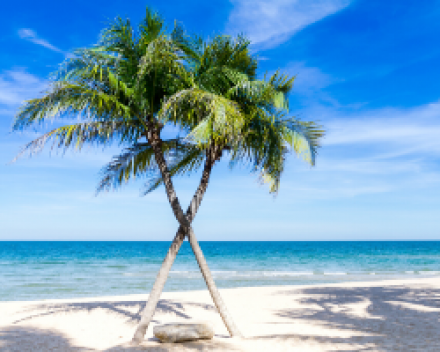Witness turtles spawn eggs in Con Dao island
2Con Dao is one of Vietnam's two famous turtle sanctuary. Every year, turtles return to the island to spawn eggs between April to October, and it will be the season to witness these beautiful creatures in the wild. Visitors to Cat Lon beach on Bay Canh island, Con Dao archipelago, will have the opportunity to see turtles come to shore to lay eggs at night and conservation staff on the incubation task and release baby turtles to the sea.
Releasing baby turtles at Six Sense Con Dao resort
Bay Canh Island is an eco-tourism island being the largest marine turtle conservation area in Vietnam. This island has beautiful beaches and incredibly beautiful coral reeves offshore. The breeding season for sea turtles is around April to October, but the peak season is from July to September every year. Visitors can only visit the island on an organized tour by the National Park for a maximum of 4-6 hours. An overnight trip is possible too. The maximum number of visitors during the day is 48 guests, while the night tour allows 24 guests only.
Bay Canh is a protected area of Con Dao National Park, so visitors must apply for a permit (free of charge) at the national park on the main island of Con Son. With a license, you can rent a boat with the price from 1.5 million for two ways to go and return. After 45 minutes by boat, visitors to Bay Canh Islet. Then, you follow the mangrove forest trail, about 700 m to the Bay Canh Ranger Station. On the way, you can see the wild chicken, ebony squirrel, colorful butterflies. The island is covered by mangroves with about 5.1 ha, with 24 mangrove species, mainly double mangroves, parrots, parrots, lime, guava, and eagle.
Watch for turtles laying eggs.
The long beach on Bay Canh island is one of the 14 spawning grounds of sea turtle in the archipelago and is also the site with the biggest number of turtles to lay eggs.
After dinner, visitors rest on hammock tents on Bay Canh island and wait for the forest rangers to inform you when you can go to the turtle breeding area. When the tide is high, the mother turtle begins to wander on the ocean waves near the shore to find a place to lay eggs. In the silver moonlight, visitors will see mother turtles slowly crawling ashore through the beach to find her place. To lay eggs, sea turtles must follow these steps: find the beach, dig a nest, lay eggs, and cover the nest to remove traces.
The mother turtle will choose a fine sand area near the groves, dig her nest at about 50 - 60cm deep, about 20 cm wide, and start laying eggs. After completing the nest, the mother turtle uses the front foot to fill the nest with a length of 5-6 m to remove traces and camouflage from their nests. The average mother turtle lays about 80 eggs, but there are also cases of more than 200 eggs in Con Dao.
Waiting for the mother turtle to leave the nest, visitors will watch the rangers perform their conservation works, taking eggs to an incubator. Eggs will be incubated for 6 hours before transferring to a sanctuary. When returning, half of the eggs will be placed in a strong-lit sand-pool, while the other half will be placed in a covered sand-pool. This is to balance the "gender" for baby turtles because it is decided by the light and temperature when hatching. Tuttles' eggs will hatch after 45 - 60 days.
While visiting the incubation camp, you may observe baby turtles hatching. You will see each turtle trying to get out of the shell and jostle each other to climb the incubator's mouth to crawl toward the sea. Rangers will put the turtles in the basket and bring them down to the sandy shore when the water level is high at dawn. It's essential to release them at sunrise because they cannot navigate the way to the sea at other times.
Visitors will witness hundreds and thousands of toddler turtles crawling into the sea within a few tens of meters. Before the baby turtles enter the sea, they turn back to record the image of the place where they were born, so that when they mature (about 30 years later), the sea turtles will return to the same area of birth lay eggs. With a survival rate of 1/1000, protecting and assisting their hatching process is critical to increasing these rare creatures' populations. Marine turtles are included in the Red Book of Vietnam as well as around the world for conservation.
Saving the marine turtles in Con Dao island
Note
-
Because on Bay Canh island, there is only the living and working area of the ranger station, so you have to bring food. You can borrow the ranger station kitchen area for cooking.
-
Prepare a life jacket, rent diving goggles before going to the island (can be rented at the Garden Center when you apply for a permit).
- Prepare mosquito repellent and insect repellent.
- When watching the mother turtle lay eggs, keep silent, and not shine a light on the tortoise's eyes because this species is susceptible to sound and light. If shocked, the turtle will crawl back into the sea or will stop laying.
__logo.png)
__hanoi-water-puppets.jpg)
__angkor-wat-blue-reflections.jpg)
__vientiane-buddha-park-monks.jpg)
__bagan-dhammayazika-dusk.jpg)
